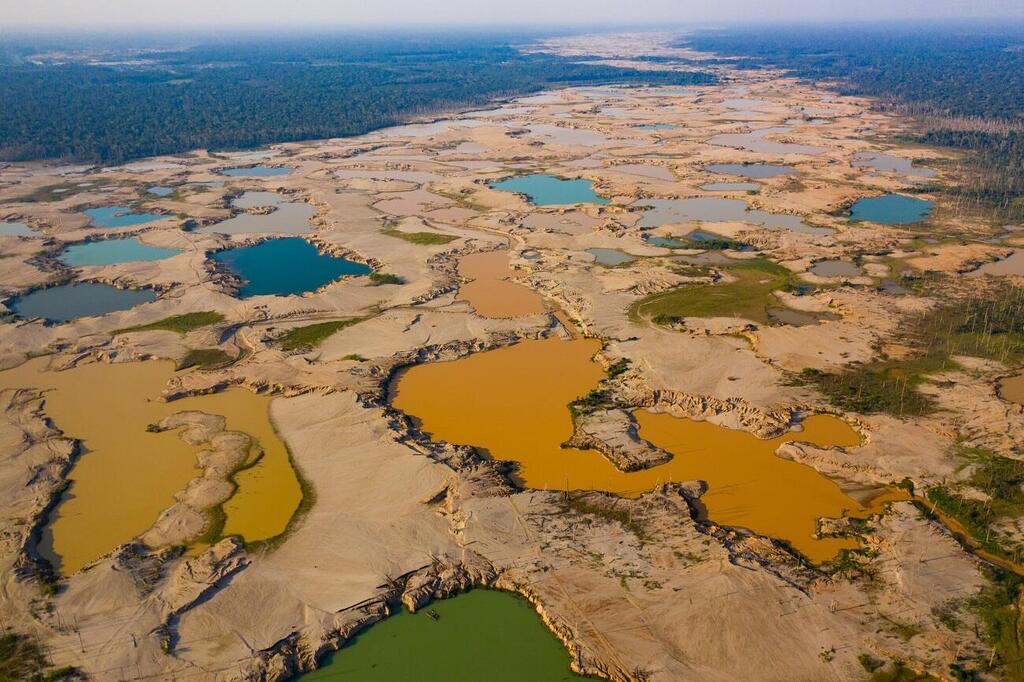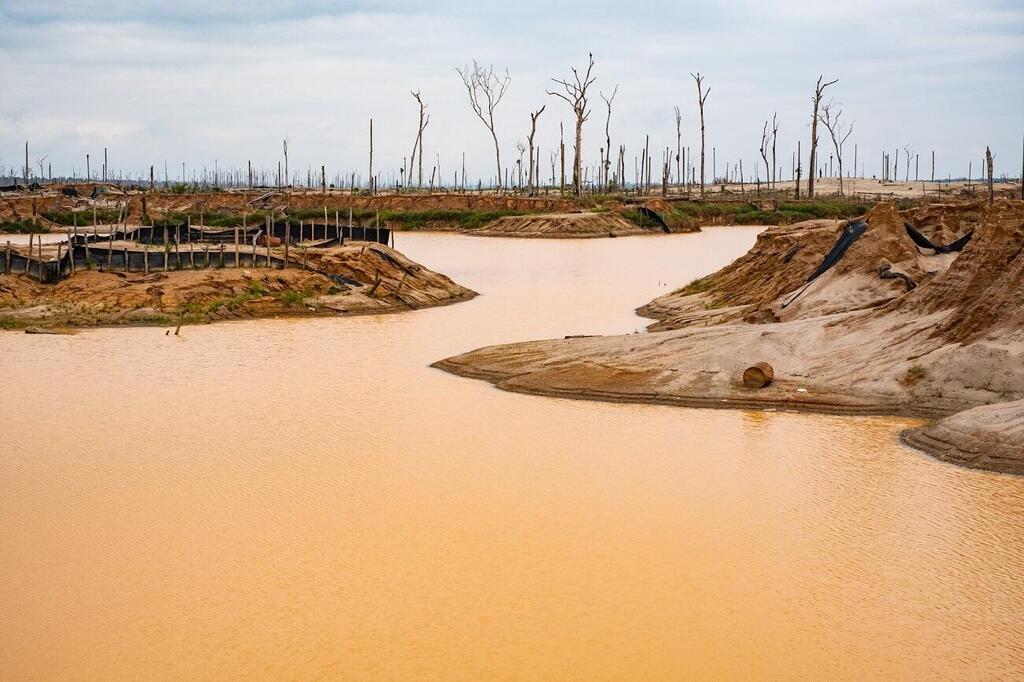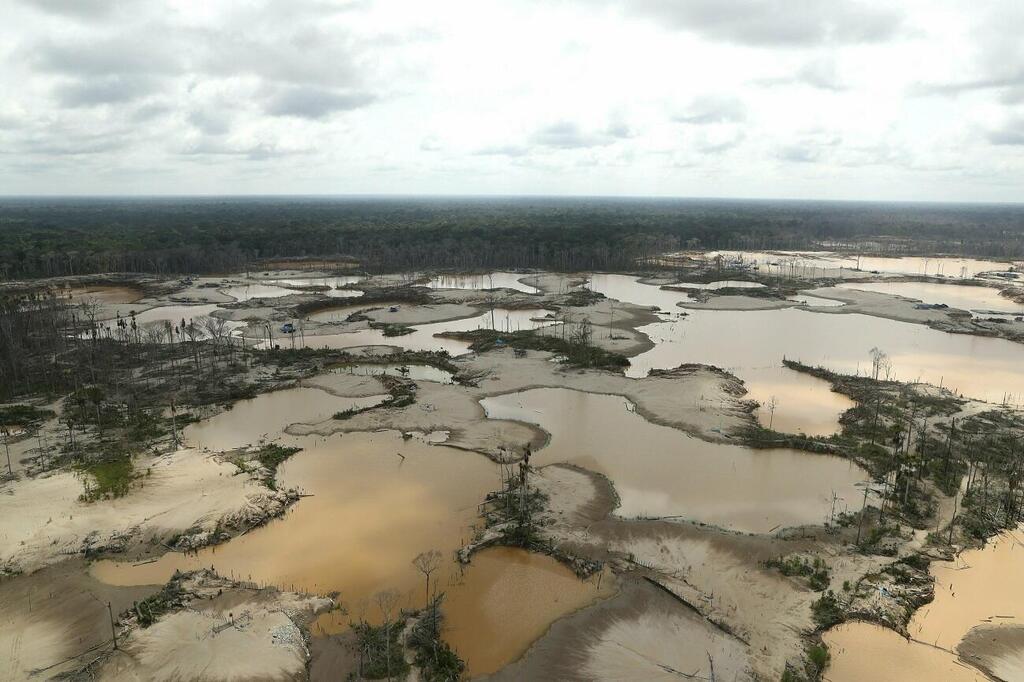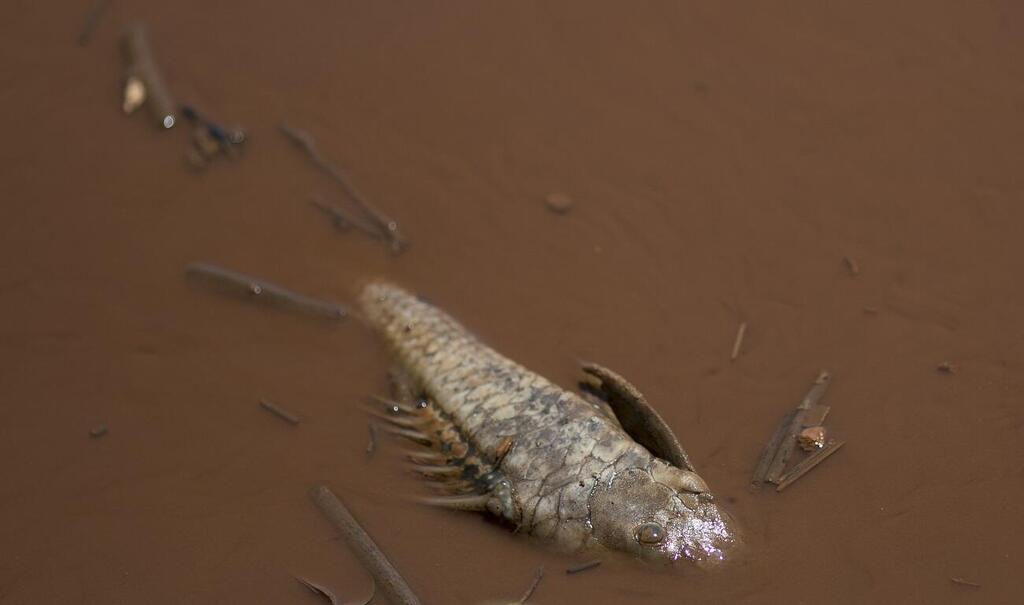The toll of mineral mining on the environment
A recently published study found that gold and mineral mining within and near riverbeds in tropical regions is causing significant harm to water sources in 49 countries worldwide. The study’s findings provide firsthand evidence of the severe environmental consequences of mining and its global impact.
Mining within and near riverbeds often involves intensive excavation, leading to deforestation and increased erosion in the areas where the rivers flow. A notable portion of the material excavated becomes mixed with river waters, disrupting aquatic life in ecosystems dependent on the river.
5 View gallery

Gold mining strips in Peru
(Photo: Jason Houston (iLCP Redsecker Response Fund/CEES/CINCIA))
Inorganic sediment, clay particles, sand and silt are carried by the rivers, carrying the harmful mining waste downriver – causing even more damage. Previous studies indicate that such sediments can also carry toxins like mercury – a byproduct of riverbed mining – further affecting water quality and potentially harming human health and the environment.
“For hundreds, if not perhaps thousands of years, mining has been taking place in the tropics but never on the scale like we’ve seen over the past two decades. The degradation of rivers from gold and river mining throughout the tropics is a global crisis,” said Dr. Evan Dethier from Occidental College’s Department of Geology, who worked on the research while at Dartmouth College.
In the first part of the study, whose findings were published in the journal Nature, researchers conducted a comprehensive analysis of riverbed mining across tropical regions from 1984 to 2021.
They analyzed data from media and professional literature, mining company reports, social media, aerial images and satellite imagery, including Landsat 5 and Landsat 7 from NASA’s space program and the U.S. Geological Survey. Additionally, images from the Sentinel-2 satellite, part of the European Copernicus Earth observation program, were also analyzed.
The researchers compiled over 7.5 million measurements of rivers worldwide to map mining areas, deforestation and sediment spread. The study’s findings pointed to the presence of about 400 isolated mining districts in 49 tropical countries. More than 80% of mining sites were located within 20 degrees of the equator in South America, Africa, Asia and Oceania.
The study’s team observed a significant rise in mining activities in the 21st century, with mining occurring at 60% of sites after 2000 and 46% of them after 2006, coinciding with the global financial crisis. This trend persisted even during the COVID-19 pandemic.
In the study’s second part, the researchers assessed the relationship between active mining and the amount of sediment carried by the flow of 173 rivers in tropical areas, using satellite data and algorithms developed over the past seven years.
The data revealed that over 35,000 km of tropical rivers worldwide, accounting for about 6% of the 500,000 km of such rivers worldwide, are affected by gold and mineral mining activities. Furthermore, mining led to doubling the amount of sediment concentrations in 80% of the 173 studied rivers, compared to their levels prior to the start of mining.
“We found that almost every single one of these mining areas had suspended sediment transmitted downstream, on average, at least 150 to 200 kilometers (93 to 124 miles) from the mining site itself but as much as 1,200 kilometers (746 miles) downstream,” Dethier said.
The study found that some 30 countries engaged in tropical river mining activities. In these countries, 23% of the lengths of their major rivers are impacted by mining. In certain countries, over 40% of the total length of these rivers is altered due to mining, including French Guiana (57%), Guyana (48%), Ivory Coast (40%) and Senegal (40%).
“Many of these tropical rivers systems are very biodiverse places, if not some of the most biodiverse places on Earth and are still currently understudied,” said Dr. David Lutz from Dortmund College’s Environmental Studies Department, who worked on the study.
“The challenge here is that there are many species that could potentially become extinguished before we even knew that they existed,” he added.
5 View gallery

Gold mining in riverbeds in Peru
(Photo: Jason Houston (iLCP Redsecker Response Fund/CEES/CINCIA))
In order to assess the ecological impact of tropical river mining, the team examined environmental management guidelines used in the U.S. and other countries and applied their standards to the data. Since the start of mining, the researchers found that two-thirds of the rivers surveyed in the study exceeded fish protection…



